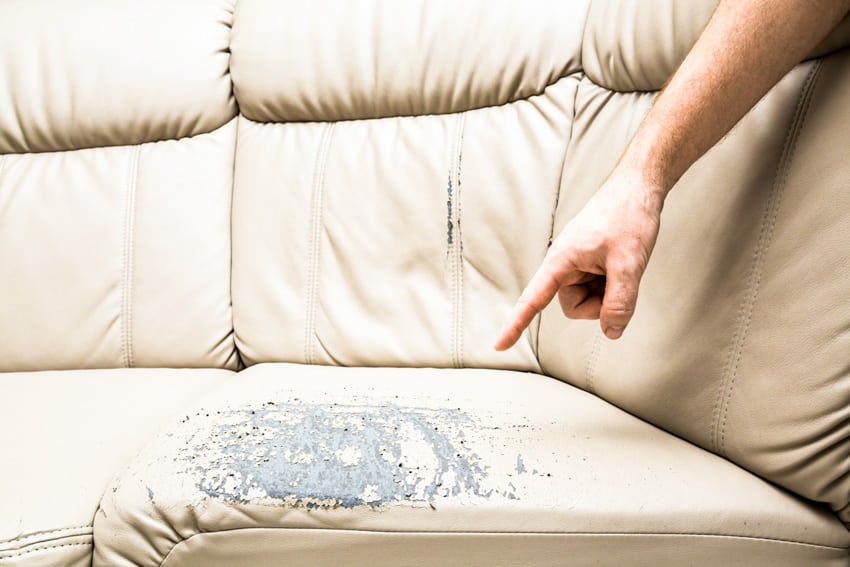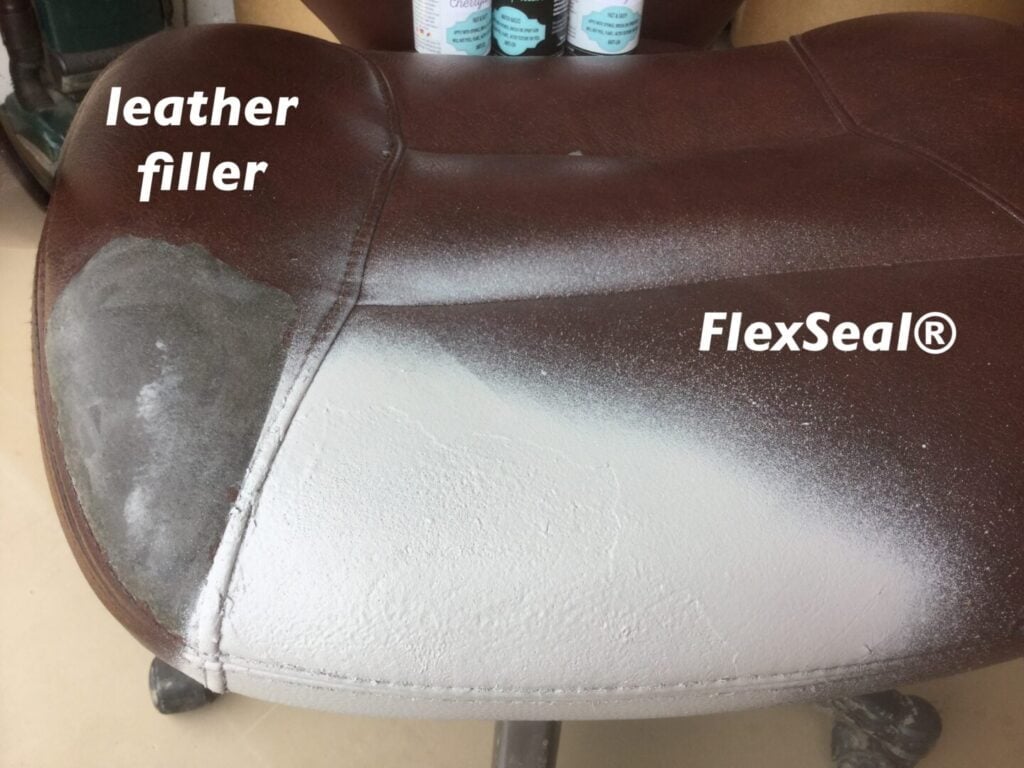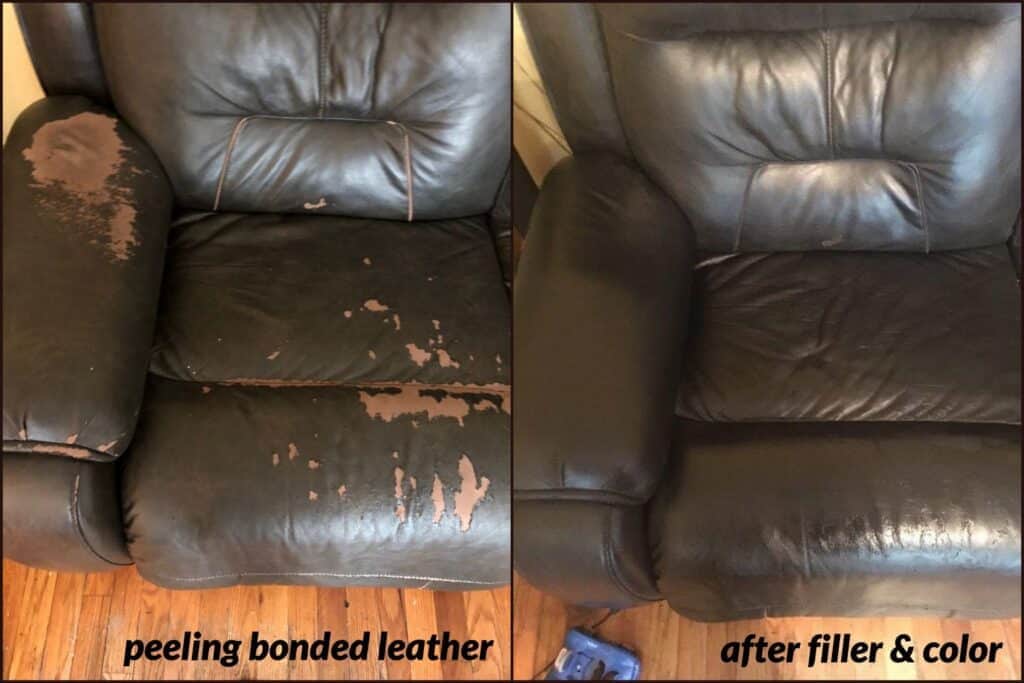Understanding Faux Leather Peeling: Faux Leather Chair Peeling

Faux leather, a popular choice for furniture and other items, can sometimes experience peeling. This issue can be frustrating and unsightly, affecting both the aesthetics and longevity of your belongings. Understanding the causes, identifying signs, and assessing the severity of peeling can help you address the problem effectively.
Causes of Faux Leather Peeling, Faux leather chair peeling
Peeling in faux leather can be attributed to various factors, including material degradation, improper care, and environmental influences.
- Material Degradation: Faux leather is made from synthetic materials that can degrade over time, especially when exposed to sunlight, heat, or moisture. This degradation can lead to cracking, flaking, and eventually peeling.
- Improper Care: Neglecting proper cleaning and maintenance practices can accelerate the deterioration of faux leather. Using harsh chemicals, abrasive cleaners, or failing to protect the material from spills and stains can contribute to peeling.
- Environmental Factors: Exposure to extreme temperatures, humidity, and UV rays can also cause faux leather to peel. Sunlight can cause the material to fade and become brittle, while humidity can lead to mold and mildew growth, further damaging the leather.
Identifying Signs of Peeling
Recognizing the signs of peeling faux leather can help you take timely action to prevent further damage.
- Cracking: Small cracks or fissures in the surface of the faux leather can indicate early stages of peeling.
- Flaking: Tiny flakes of material may start to detach from the surface, suggesting that the material is breaking down.
- Peeling: Larger pieces of the faux leather may begin to peel off, revealing the underlying material or padding.
Assessing the Severity of Peeling
The severity of peeling can vary, and it’s important to assess the extent of the damage to determine the best course of action.
- Minor Peeling: Small, isolated areas of peeling may be repairable with a leather repair kit or professional restoration.
- Moderate Peeling: Larger areas of peeling or peeling that extends to the seams or edges may require more extensive repairs.
- Severe Peeling: Extensive peeling or peeling that has compromised the structural integrity of the item may necessitate replacement.
Potential Risks of Peeling Faux Leather
Peeling faux leather can pose several risks, including safety hazards and aesthetic concerns.
- Safety Hazards: Peeling faux leather can create sharp edges or loose pieces that could cause injury.
- Aesthetic Concerns: Peeling can significantly detract from the appearance of furniture or other items, making them look worn and unattractive.
Solutions for Faux Leather Peeling

Faux leather peeling is a common problem, but don’t fret! There are several solutions you can use to fix it and prevent it from happening again.
Repairing Peeling Faux Leather
Repairing peeling faux leather involves patching, sanding, and using leather repair kits. You can choose the method that best suits your needs and the severity of the peeling.
Patching
Patching is a simple and effective way to repair small areas of peeling.
- Cut a patch of faux leather the same color as the damaged area.
- Apply a layer of leather adhesive to the back of the patch and the damaged area.
- Press the patch firmly onto the damaged area and hold it in place for a few minutes.
- Let the adhesive dry completely before using the chair.
Sanding
Sanding can be used to smooth out rough edges and create a more even surface.
- Use fine-grit sandpaper to gently sand down the peeling areas.
- Be careful not to sand too hard, as this could damage the faux leather.
- Once the peeling areas are smooth, you can apply a leather conditioner to help protect the faux leather.
Leather Repair Kits
Leather repair kits are available at most craft stores and online retailers. These kits typically include a colorant, a sealant, and a brush.
- Follow the instructions on the kit carefully.
- Clean the damaged area before applying the colorant.
- Apply the colorant evenly and let it dry completely.
- Apply the sealant to protect the repaired area.
Preventing Faux Leather Peeling
Proper care and maintenance can help prevent faux leather from peeling.
Cleaning
Regular cleaning can help remove dirt and grime that can damage the faux leather.
- Use a mild soap and water solution to clean the faux leather.
- Avoid using harsh chemicals or abrasive cleaners.
- Dry the faux leather thoroughly with a soft cloth.
Storage
Proper storage can help protect faux leather from damage.
- Store faux leather chairs in a cool, dry place.
- Avoid storing them in direct sunlight or in areas with high humidity.
- Cover the chairs with a dust cover when not in use.
Sunlight Exposure
Direct sunlight can cause faux leather to fade and crack.
- Avoid placing faux leather chairs in direct sunlight.
- Use curtains or blinds to block out the sun.
Comparing Repair Methods
Here is a table comparing the different repair methods for peeling faux leather:
| Repair Method | Effectiveness | Cost | Ease of Application |
|—|—|—|—|
| Patching | Good for small areas of peeling | Low | Easy |
| Sanding | Good for smoothing out rough edges | Low | Moderate |
| Leather Repair Kits | Excellent for repairing larger areas of peeling | Moderate | Moderate |
Replacing Peeling Faux Leather

So, your faux leather chair is looking a little rough around the edges, huh? The peeling is starting to make you cringe, and you’re thinking about giving it a makeover. Replacing the faux leather is a great way to breathe new life into your chair and make it look brand new. But where do you start?
Finding Replacement Faux Leather
Finding replacement faux leather is easier than you think. There are plenty of online retailers and local fabric stores that sell high-quality faux leather in a variety of colors and textures.
- Online Retailers: Websites like Amazon, Etsy, and Fabric.com offer a wide selection of faux leather fabrics, from classic black to vibrant colors and unique textures. You can find everything from budget-friendly options to premium quality materials.
- Local Fabric Stores: Local fabric stores are a great place to find faux leather in person. You can touch and feel the material, ensuring it’s the right texture and color for your chair. You can also get expert advice from the staff on the best faux leather for your project.
Reupholstering a Faux Leather Chair
Reupholstering a chair might sound intimidating, but it’s actually a DIY project that’s achievable for anyone with basic sewing skills. Here’s a breakdown of the process:
- Tools and Supplies: You’ll need a few basic tools for reupholstering, including a staple gun, upholstery tacks, scissors, a measuring tape, and a sewing machine. Make sure to choose the right staple gun for the type of faux leather you’re using.
- Removing the Old Fabric: Carefully remove the old faux leather from the chair using a screwdriver or pliers to detach the staples. Be sure to save the old fabric as a template for cutting the new fabric.
- Cutting the New Fabric: Use the old fabric as a guide to cut the new faux leather to the exact size and shape. Allow for extra fabric around the edges for stapling.
- Stapling the New Fabric: Starting with the bottom of the chair, carefully staple the new faux leather to the frame. Work your way up, pulling the fabric taut and ensuring it’s smooth and wrinkle-free.
- Finishing Touches: Once the new faux leather is securely stapled, trim any excess fabric and use upholstery tacks to finish the edges for a professional look.
Choosing the Right Faux Leather
When choosing faux leather for your chair, consider these factors:
- Durability: Faux leather comes in various levels of durability, so choose one that will hold up to wear and tear. For chairs that get a lot of use, opt for a thicker, more durable faux leather.
- Color: The color of your faux leather should complement the rest of your furniture and decor. Consider the overall style of your room and choose a color that will blend in or create a statement.
- Texture: Faux leather comes in a wide variety of textures, from smooth to embossed. Choose a texture that you find comfortable and that suits the style of your chair.
Faux leather chair peeling – The peeling of faux leather on a chair can be a frustrating sight. It’s a reminder that even the most durable materials can wear down over time. If you’re looking for a more comfortable and stylish option, perhaps a faux leather chair bed could be a better choice.
While the material may still be susceptible to peeling, the added comfort and versatility of a chair bed might be worth the potential trade-off. Ultimately, the decision is yours, but remember to consider the long-term durability and practicality of your furniture choices.
Faux leather chairs, while offering a budget-friendly alternative, often face the unfortunate issue of peeling. This can be disheartening, especially if you’ve invested in a stylish piece like a camel faux leather accent chair. While the peeling may be a cosmetic issue, it can also indicate the material’s degradation, so it’s important to be mindful of this potential issue when choosing faux leather furniture.